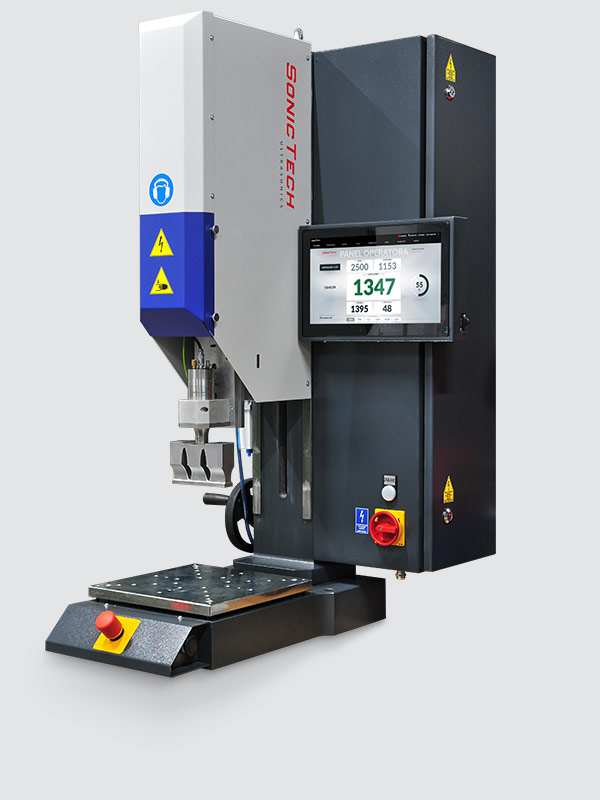Human cannot hear it, however they are easily found when touching welding machines with its wide application within industrial conditions. Ultrasound vibrations occur as oblong waves being changed into heat and are able to change the shape of plastics and cause friction between particles. Those processes enable precise cutting, brazing, cleaning and joining of elements of different shapes and structures. It is worth mentioning, that ultrasound frequencies between 20 and 35 kHz are not harmful for humans and animals.
With the spread of usage and application of plastics in the last three decades , welding by using ultrasounds has become one of the most important process of joining materials.
Welding and riveting by using ultrasound has found its wide application in the automotive, textile, electro-technical and packaging industry as well as many others not mentioned above.
In practice ultrasound welding machines operate frequencies between 20 kHz and 40 kHz. There are two types of ultrasound welding machines: those to weld plastics and those to weld metals.The way ultrasound welders work
Welding machines joining plastics work on the basis of delivering large amount of mechanical energy to materials placed between the vibrating tool (sonotrode) and the anvil. Ultrasound energy created at touch point of materials causes a few reactions at the same time: point heating, movement (vibration) of the particles, creates high pressure etc. As a result of those the materials are joint. The characteristics of the joint depend on the type of materials used. Most often there is a local fusion and mixing of combined materials, but also we have to deal with the phenomenon of adhesion and mechanical micro-joints of subsequent hardening by solidification of the material particles more susceptible in the pores of the material tougher.The parts of the ultrasound welding machine
In the typical ultrasound welding machine we can specify mechanical part – table, column, pneumatics and ultrasound part – generator, converter, booster and the tool (sonotrode). The generator is the most important part of the machine. It changes the voltage 230 V 50Hz to much higher one (over 1000V) and frequencies 20, 30, 35 kHz (depending on technology). The converter is powered by generator and its main job is to change the electrical power into the mechanical one. Furthermore the mechanical energy from the converter is sent to the booster and further down to the sonotrode.During welding, the sonotrode puts pressure on the welded elements and causes vibrations as a result of what the welded elements are joint.
Booster has got to-fold purpose: it increases (most of the time) or decreases the amplitude, and it is the part by which elements are fixed within the welding machine.
The last element of teh vibrating system - the sonotrode – is an element produced according to specific needs of the client. Sonotrodes can be divided into those with reinforcement or without.
The advantages of ultrasound welding
- energy-saving,
- harmless to the environment, elimination of toxic glues and solvents,
- short time span of welding (fraction of a second),
- high efficiency,
- easy and clean way of joining materials,
- elements being joint do not need to be very clean,
- possibility of joining different types of materials.

